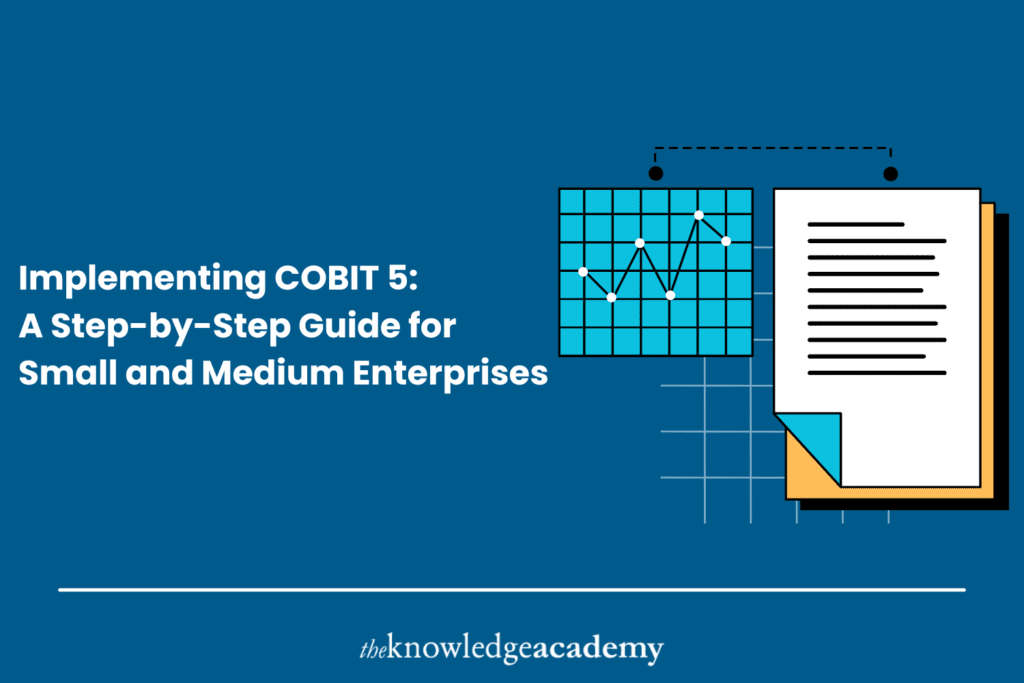Implementing effective IT governance is crucial for small and medium-sized enterprises (SMEs) aiming to align their IT operations with business objectives. Engaging in COBIT Training equips organisations with the tools to navigate this alignment seamlessly. By embracing COBIT 5 Principles, SMEs can establish a robust framework that enhances performance, manages risks, and ensures compliance. This blog offers a step-by-step approach tailored for SMEs to implement COBIT 5 effectively. Let’s explore the journey towards streamlined IT governance.
Table of Contents
- Steps to Implement COBIT 5 in Your SME
- Conclusion
Steps to Implement COBIT 5 in Your SME
Below are the essential steps to guide your organisation through the COBIT 5 implementation process:
- Assess Your Current IT Governance
Begin by evaluating your existing IT governance practices to identify strengths and areas for improvement. Document current IT processes and controls and assess their effectiveness in meeting business objectives. Engage stakeholders to understand their needs and expectations from IT. This assessment will establish a benchmark to gauge advancement and identify certain domains where COBIT 5 might enhance value. Additionally, benchmark your practices against industry standards to gain insights into potential enhancements.
- Define Clear Objectives
Establish what your organisation aims to achieve with COBIT 5, such as improved risk management, enhanced compliance, or better alignment between IT and business goals. Clear objectives will provide direction for the implementation process and help prioritise efforts. Ensure these objectives are specific, measurable, achievable, relevant, and time-bound (SMART). Moreover, these objectives should be aligned with the organisation’s overall strategic goals to ensure coherence and support from top management.
- Engage Stakeholders
Effective implementation necessitates the endorsement of all pertinent stakeholders, including top management, IT personnel, and business unit leaders. Communicate the benefits of COBIT 5 and how it aligns with the organisation’s strategic goals. Address any concerns and highlight how the framework can resolve existing pain points. Stakeholder engagement fosters collaboration and ensures that the implementation process is well-supported across the organisation. Additionally, identify and involve key organisational influencers who can champion the initiative and facilitate broader acceptance.
- Develop a Tailored Implementation Plan
Create a customised plan that outlines the processes to focus on, resources required, timelines, and responsibilities. Consider joining a pilot programme to test the framework in a controlled environment before a full-scale rollout. The plan should be flexible to accommodate adjustments as needed and include key performance indicators (KPIs) to track progress. Furthermore, risk management strategies should be incorporated to anticipate and mitigate potential challenges during implementation.
- Provide COBIT Training
Equip your team with the knowledge and abilities through comprehensive COBIT training programmes. Training ensures that staff understand the principles and practices of COBIT 5, enabling them to apply the framework effectively. Consider leveraging resources from reputable providers like The Knowledge Academy to ensure high-quality training. Additionally, it offers continuous learning opportunities and refresher courses to keep the team updated on evolving standards.
- Implement the Framework
Execute the implementation plan by assigning roles and responsibilities, documenting procedures, and integrating COBIT 5 processes into daily operations. Ensure clear communication throughout the organisation about new processes and expectations. Monitor the implementation closely to identify and address any issues promptly. Moreover, establish a support system or helpdesk to assist employees in adapting to the new framework and resolving any operational challenges that arise.
- Monitor and Continuously Improve
After implementation, the effectiveness of the new IT governance framework must be continuously monitored. Use the established KPIs to measure performance and conduct regular audits to ensure compliance. Encourage stakeholder feedback and be prepared to adjust address evolving business needs and technological changes. Continuous improvement ensures that the COBIT 5 framework stays relevant and delivers value to the organisation. Additionally, document lessons learned and best practices to inform future initiatives and build a repository of organisational knowledge.
Conclusion
Implementing COBIT 5 principles enables SMEs to establish a robust IT governance framework that aligns with business objectives, manages risks, and enhances performance. By following a structured approach and investing in COBIT training, organisations can navigate the complexities of IT governance effectively. For comprehensive training and resources, consider exploring The Knowledge Academy to support your implementation journey.
Add Business Connect magazine to your Google News feed



